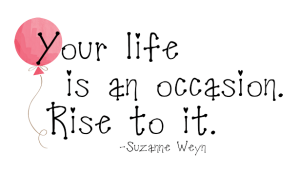To read all posts in this series from the beginning, click here.
The more we reflect on our circumstances, the more insight we develop. And words, by their very nature, are not always as precise as they could be. So it’s not literally possible to put together an exact description of our shortcomings at the fifth step of a recovery program. Even if we think it’s exact at the time, there will always be something that looks different as we gain more perspective.
When we’ve made our best efforts to identify the problems, though, it’s time to move on to Step Six, which is to be “entirely ready” for their removal. This task, like the previous one, is harder than it looks. After all, we wouldn’t have addictions if we didn’t enjoy something about them. So what’s called for at Step Six is complete willingness to give up that enjoyment, now that we have learned it’s not worth the harm.
Truth be told, there are plenty of things we like about our negative thinking. All that drama is exciting and makes us feel powerful. When we get in the habit of blaming others, we don’t have to think about our own responsibilities and whether we could have done better. Instead, we can imagine ourselves as righteous comic-book heroes valiantly defending truth and justice. And when others criticize us, we can play the victim and wallow in self-pity, whining about how mean and unfair they are.
That’s a lot to give up, even after realizing how much our negative thinking damages our relationships and sucks the joy out of our experiences. To be entirely ready to live without negativity, we must be willing to live without fault-finding and excuses. While that doesn’t mean going to the opposite extreme and blaming ourselves every time something goes wrong, it does call for withholding judgment and considering that there might be other explanations.
Just as we can’t fully understand our own circumstances because there are always more details on which to reflect, our understanding of others’ circumstances also is limited and incomplete. We don’t know exactly what caused them to act as they did. Often it’s not an evil premeditated motive, but just confusion or misunderstanding. Maybe they’re cranky because they didn’t get enough sleep, had a bad day at work, are feeling unwell, or have other problems we don’t know about. In short, their behavior probably doesn’t have much to do with us at all. They’re not really enemies—just ordinary people struggling with their own problems.
Although taking this perspective may seem harder than jumping to the familiar negative assumptions, it doesn’t really consume more time or mental energy. Because of the mind’s tendency to dwell on unpleasant incidents, when we assume that someone is deliberately being malicious, we’re likely to ruminate about the incident for a long time—which is not only a waste of time and energy, but also causes us to feel miserable for no good reason.
One morning in early May, a woman I had just met made an uncalled-for remark about my appearance. At first I was annoyed; but then I thought, well, she doesn’t know me either, so this can’t be about me. She must have been in a bad mood for her own personal reasons. That observation gave me enough emotional distance not to let her remark upset me. I later learned that she was depressed about losing her hair while she was in chemotherapy and that she was jealous of my hair.
When we understand that as a general rule, there’s no need to take other people’s behavior too seriously because they are not really trying to do us any harm, we can become genuinely ready to let go of that unhealthy old pattern of negative assumptions.









